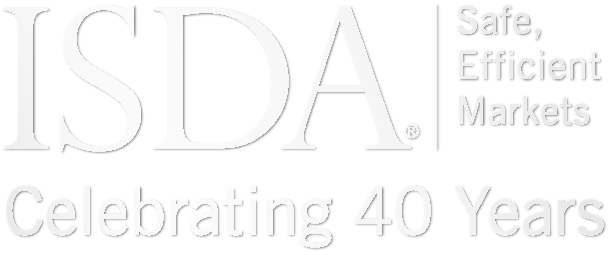
ISDA Chief Executive Officer Scott O'Malia offers informal comments on important OTC derivatives issues in derivatiViews, reflecting ISDA's long-held commitment to making the market safer and more efficient.
Recent market volatility on the back of the coronavirus pandemic has raised some questions about the performance of the ISDA Standard Initial Margin Model (SIMM). We thought it would be helpful to set out some information on how the model has been designed, and how the governance framework for monitoring performance works.
First, it’s important to point out that there is a process in place to monitor the performance of the SIMM, overseen by a governance executive committee with feedback from a governance forum comprising users of the model. Regulators around the world regularly receive details on SIMM performance to validate the soundness of the model. The overarching aim of the framework is to ensure the model continues to be appropriate and risk-based. If there is evidence of breaches across the industry, then appropriate action will be taken in consultation with market participants and regulators, based on what the data shows.
The SIMM itself is designed to be conservative – it is calibrated based on the past three years of historical data and one year of market stress, currently identified as the 2008/09 financial crisis. That level of conservatism was intended to avoid the risk of the model being pro-cyclical – in other words, to ensure margin requirements don’t suddenly hike during a period of stress, heaping pressure on market participants. Instead, the inherent conservatism means there is a safety buffer built in to ensure stability even during periods of volatility.
That doesn’t mean the SIMM is unalterable. The next quarterly monitoring period will cover the March 2020 market moves, and will provide important data to assess the situation. Any breaches will be brought to the attention of the governance forum, the governance executive committee and the ISDA board in order to determine whether a response is necessary, and the findings will be shared with regulators. If there are isolated breaches, the governance framework allows parties to remediate on a bilateral basis.
The whole process is driven by data and evidence, and this has resulted in a number of adaptations to the model over time. We stand ready to take the appropriate and necessary steps as shown by the ongoing testing data. As per usual, any changes would be reviewed and approved by regulators across the globe.
The ISDA SIMM is currently doing what it is designed to do – to provide a common, industry wide model that is conservative enough to avoid a pro-cyclical response in a period of stress. ISDA, alongside market participants and regulators, will closely monitor the current situation to ensure the model continues to reflect risk, based on the evidence.
Latest
ISDA, IIF Response to PRA on Market Risk Framework
On September 12, ISDA and the Institute of International Finance (IIF) submitted a joint response to the Prudential Regulation Authority’s (PRA) consultation on adjustments to the market risk capital framework (CP 17/25). ISDA and the IIF strongly believe the market...
ISDA Response on Clearing Costs
On September 8, ISDA responded to consultation by the European Securities and Markets Authority (ESMA) on a draft regulatory technical standard on clearing fees and associated costs (article 7c(4) of the European Market Infrastructure Regulation (EMIR)). In the response, ISDA...
ISDA Response on Margin Transparency
On September 8, ISDA responded to a consultation by the European Securities and Markets Authority (ESMA) on a draft regulatory technical standard under the European Market Infrastructure Regulation (EMIR 3.0) on margin transparency requirements. ISDA’s members are supportive of margin...
Paper on Liquidity Assessment for Single-name CDS
On September 5, ISDA submitted a paper to the European Securities and Markets Authority (ESMA) and the European Commission in support of its earlier response to ESMA’s Markets in Financial Instruments Regulation (MIFIR) review consultation package 4 (CP4) on transparency...



